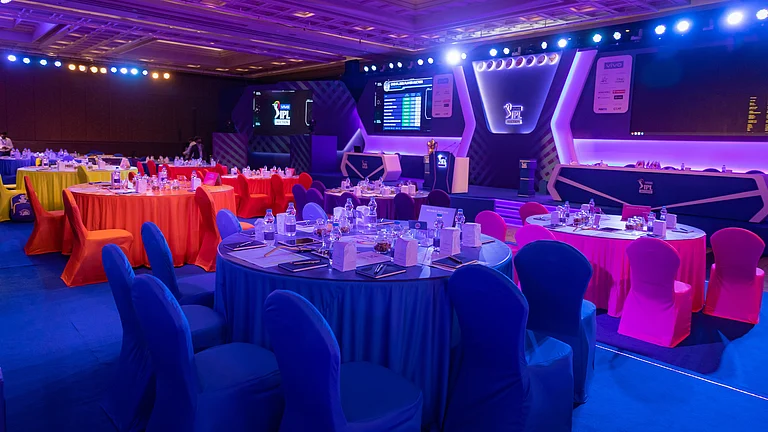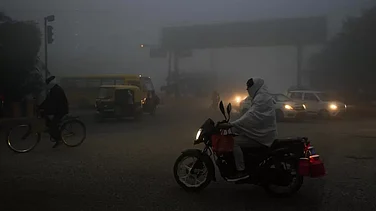The pandemic has proven to be fertile ground for rapid action collaborations that are involved in rescue, relief and restoration of hope for sustainable living for rural and remote communities. What started as a crisis intervention for India and its vulnerable population by civil society actors, there is a need for systematic institutionalisation as the way forward for India.
The pandemic has had a disastrous impact on India because of its huge population and gaps in public health systems. Addressing the health and humanitarian crisis we are faced with today requires an extraordinary response and that is taking place on the ground as we speak. This is the time when leaders must work together, melting borders, breaking out of their existing silos and coming forward for dramatic large-scale emergency response. We are faced with unprecedented deaths at a mass scale as COVID reaches rural India. Alongside, the secondary impact of the health crisis and loss of livelihoods at a large scale and mass hunger is highly likely.
This situation has exposed the vulnerability of India’s very remote rural communities not only related to lack of access to sufficient public health infrastructure but also the livelihoods infrastructure. The national livelihood models have for too long been viewed from the skewed westernised and Asian Tiger lens of employment generation, which assumes that more and more of India’s rural population will migrate to cities for work and the required economic growth exists. This strategy lies exposed for its weaknesses as Rural India is culturally completely different from other nations where these models may have worked. India as usual has to come up with its own unique models. We can assume that the government will be working towards addressing the systemic gaps as promptly as possible to deal with the public health crisis and also with the livelihood crisis. It’s time to walk the talk on Atma Nirbhar Bharat, creating more rural success models in smaller manufacturing but with global quality and competitiveness, with enhanced budgets to Rural Livelihoods -both to the Government and Social Enterprises.
In the meantime, it is the responsibility of social entrepreneurs to work in partnership with the government health and livelihood systems and programs, along with the private sector hand in hand to resolve the current emerging threats with collaborated efforts. There are already coalitions at work in the country rendering rapid and relevant responses to communities in trouble, since the onset of the pandemic, that should be supported and nurtured to scale. For example, - Covid Action Collaborative (CAC) & Rapid Rural Community Response (RCRC) were set up a year ago and since then they have reached 3 million households each. Also, with their constant interaction with donors and governments, they aligned US$30 million-plus support as well as diligently advocated for the relaunch of flagships schemes like MNREGA, releasing substantial amounts of funds into the community.
The COVIDActionCollab (CAC) is an all India collaborative, united to provide relief, recovery and build resilience among the most vulnerable communities. The collaborative consists of Organizations and Networks working together to support these communities during the period of crisis and enable them to secure their future. The 323 partners strong collaborative has delivered 30 lakh services with 2000 volunteers and has a presence through partners in 712 districts of India. The Collaborative envisions a world where vulnerable communities are empowered to survive and thrive during a humanitarian crisis. CAC aims to achieve synergy among its partners at multiple levels in order to accelerate impact, in keeping with the needs of these communities. Catalyst Group, the incubator is facilitating the formation and operation of the collaborative driving its success along with eminent partners such as USAID and the Skoll Foundation.
Similarly, in March 2020, more than 60 civil society organisations (CSOs) came together to form a coalition—the Rapid Rural Community Response to COVID-19 (RCRC)—to enable a quicker response to the pandemic in rural areas. RCRC member organisations serve over 16 million people in over 110 districts of 15 states with relief and livelihood support and anchor strong government partnership.
Another exemplary collaborative effort is Manah Wellness that co-created a mental health helpline in 18 languages along with its partners under the umbrella of Lets Talk India, and was able to lead a partnership with 30+ NGOs on the ground. 300+ mental health professionals were recruited to provide mental health support to communities in distress via a free mental health helpline handling upwards of 100 calls per day at peak of the pandemic.
Following the success of CAC & RCRC coalitions during the first year of Covid, in the second wave, a convening Catalyst 2030 National Association of Social Entrepreneurs (NASE) has emerged with a reach of more than 500 organizations, having pan India database and access. Catalyst 2030 NASE has gathered data of these organizations district wise, ensuring relief when distributed, moves rationally and to the neediest. Similarly, another rapid response in recent weeks is the Bangalore based CoLive- Covid Livelihoods Coalition that is following a tiered approach in their response to serving people and is built on the strengths of the earlier two collaboratives, CAC & RCRC with all 3 being closely affiliated with Catalyst 2030 NASE. It would be fair to say that all combined collaboratives with many more possibilities in the pipeline, not cannibalizing each other, but working toward complementarities are most critical in streamlining the required response for communities most in need. The gross goal of these coalitions is to serve at least 20% of the total rural Indian population, accessing 150 million people through their deep tactical strategies.
Coalitions led by social entrepreneurs are unique because they own assets of a variety of benchmark models of serving communities and operational structures that allow them to work at scale, be it as earned revenue-based social enterprises or as philanthropy/government resource-driven social enterprises, who seamlessly anchor government partnerships. As the sector of social entrepreneurs comes together with multiple solutions to diverse social challenges (that has been further escalated by the pandemic), they are able to address the ongoing health crisis with multifold sustainability with their collective strengths. Synchronisation and alliance of these social entrepreneur driven networks with the Government of India can certainly lead us to the dawn of transformed India.
This wide context of successes and wins of collaborative actions sets the stage for us to adopt large scale cross-sector partnerships to deal with the current pandemic and future challenges faced by the country with grace and dignity for our most vulnerable populations.
(Neelam Chibber is the founder of Industree, Shiv Kumar is the Chief Integrator of COVIDActionCollab and Dr. Ashwin Naik is the founder of Manah Wellness. Views expressed are personal and do not necessarily reflect those of Outlook Magazine.)





















